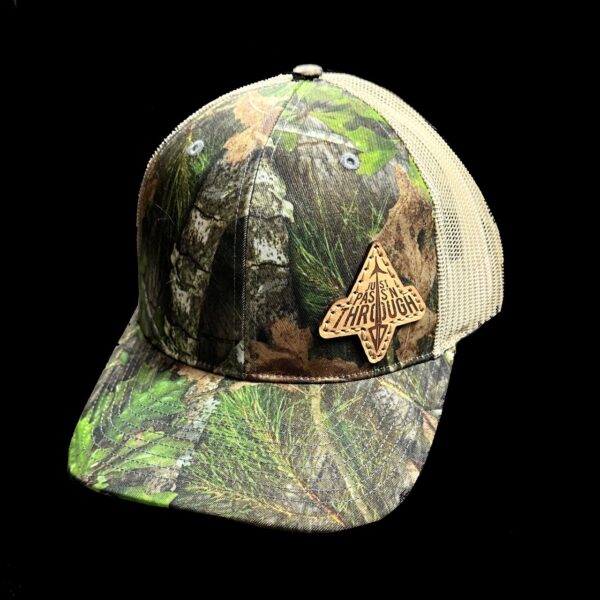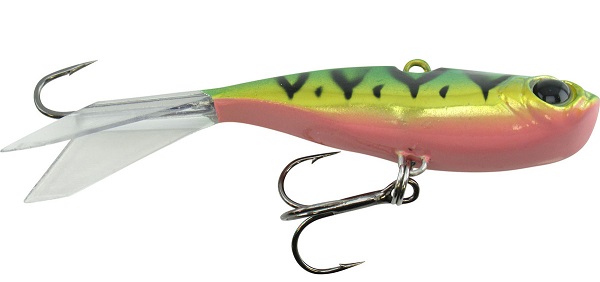In the bodies of water where walleye are found, this fish is a very popular and sought-after species among anglers.
In fact, many anglers fish solely for walleye and very rarely fish for anything else.

There are guide, charter and tackle services that focus exclusively on walleye. Read on for tips about how you can catch this predatory fish!
This has spawned a niche in the fishing industry in which many guide and charter services, along with tackle businesses, focusing solely on the walleye species.
So, let’s take a look at some great tips and tricks to find and catch walleye. If you are new to walleye fishing, these tips will undoubtedly help you put a hook N1 the next time you are on the water.
Location, Location, Location
When it comes to real estate, property values and businesses, location is one of the most important aspects.
Walleye fishing is no exception!

Fish not only in areas where walleye are known to be (like points, reefs and humps), but also fish for them their at the right times (read more below!)
It may seem obvious, but you can’t consistently catch walleye if you aren’t fishing in areas where walleye visit or feed on a regular basis. And, you should always be fishing in spots where they can be found based on the time of the season or current conditions.
If you are fishing in a new lake, you should be studying it in detail before you even touch a fishing rod.
You should key in on areas like rocky points, mudflats, sandbars, islands, reefs, and mid-lake structures like humps.
Weed lines and the drop-offs adjacent to them can also hold large numbers of walleye under the right conditions.
In rivers, you should search out deep holes, eddies, troughs along banks, flats, and timber.
Prime Walleye Fishing Conditions

Fishing for walleye in the early morning and at dusk are typically the best times of day, as walleye like to feed in the lower light.
Early mornings and dusk are the prime times to fish for walleye as they normally feed in these low light conditions as well as at night, thanks to their eyes being perfectly suited for the task.
If fishing after dark, target shallow areas. The walleye will typically push up in the shallows to feed on schools of minnows.
This doesn’t mean walleye don’t feed in the daylight hours, though, and a great time to fish for them during the day is when there is an overcast sky.
The cloud cover during overcast conditions will diffuse the light, and the low barometric pressure you are likely to have at this time is a great trigger to get the walleye into a positive feeding mood.
-

The “Outdoors All N1™” Hand Illustration Tee
Price range: $24.99 through $28.99 Select options This product has multiple variants. The options may be chosen on the product page -
Sale!

N1 Outdoors® Put A Hook N1™ Trout Short-Sleeve Tee
$5.00 Select options This product has multiple variants. The options may be chosen on the product page -
Sale!

N1 Outdoors® Put A Hook N1™ Trout Long-Sleeve Tee
Original price was: $28.99.$5.00Current price is: $5.00. Select options This product has multiple variants. The options may be chosen on the product page
Walleye Fishing During The Day
During the day, walleye can be found in many different areas and depths, so the key is finding the food. If you find the food, you will find the walleye.
Search areas that are likely to hold walleye that were mentioned earlier, and if you find a large amount of schooling bait around these spots, start fishing!
“Walleye Chop”

Inclement weather can cause the perfect conditions for a walleye’s instinct to feed and can be a great time to be out on the water, providing conditions are safe enough to do so.
Heavy waves and windy conditions diffuse the light and stimulate the walleye’s instinct to feed, and this can be a great time to be on the water. Just do so safely. (The term “walleye chop” is something you will frequently hear among the walleye angling crowd, and this is nothing more than wave action in the form of “choppy waves.”)
You can also catch walleye in sunny conditions during the day, although it may be significantly harder, and the fish are probably in deeper water out from the structure or suspended in the basin of the lake.
-
Sale!

N1 Outdoors® Just Pass’N Through™ Leather Patch Hat (Mossy Oak Obsession/Khaki)
Original price was: $29.99.$19.99Current price is: $19.99. Select options This product has multiple variants. The options may be chosen on the product page -

N1 Outdoors® RodTogs™ Patch Trucker Hat (White)
$26.99 Select options This product has multiple variants. The options may be chosen on the product page -

N1 Outdoors® RodTogs™ Patch Trucker Visor (Red w/White Mesh)
$26.99 Select options This product has multiple variants. The options may be chosen on the product page
Walleye Lure Presentations

Crankbaits, jigs and soft paddle tail lures are some great options for catching walleye.
There are a plethora of lures out there made specifically for walleye, and they react positively to most of the common lure types on the market.
Let’s take a look at some of the most common types of tackle used in walleye fishing.
Crankbaits

Crankbaits can be used both by casting and trolling to entice the walleye bite (photo credit: fishusa.com)
Crankbaits can work great for catching walleye, both casting and trolling.
In river fishing situations, fishing after dark, and in many other situations, crankbaits can help you catch fish and cover water quickly.
Trolling crankbaits can be the most effective way to catch walleye when fishing large bodies of water, and is the primary tactic in places like the Great Lakes, Lake St. Clair in Michigan, The St. Lawrence River, and Lake Winnebago in Wisconsin, and other large bodies of water where you have to cover miles of structure or the basin for suspended fish.
Jigs

Jigs are one of the most versatile lures when it comes to walleye. Fish them in timber, flats, and drop-offs. (photo credit fishusa.com)
Jigs have probably caught more fish of all species than any other type of lure. And this holds true for walleye as well.
Used with soft plastics or live bait, you can fish a jig pretty much anywhere. Timber, weeds, flats, down a drop-off, rip rap and rock, you name it, are all areas where you can effectively use a jig, though you may lose a few to snags; that’s the nature of the game when it comes to jigging.
Jigging works great if you have specific spots that are likely to hold large numbers of fish but are incredibly large, like holes in rivers, points, humps, and other areas. This is due to the slow nature of jig fishing, and it shouldn’t be used as a search bait in most instances.
Lure Size and Color
Lure size and color is a critical component to catching walleye.
Size

Contrary to what some believe, it’s not true that walleye only eat small bait, so don’t shy away from larger lures for trophy walleye. (photo credit: Amazon)
While there are no rules laid in stone, we can look at some general tips to follow when it comes to lure size.
During tough fishing conditions, it might be a good idea to downsize if you are struggling to get strikes.
And, while there is a common perception that walleye only eat small prey and look past larger prey, this isn’t necessarily true.

Soft-paddle tail lures can be an effective bait to use for catching walleye. (photo credit: fishusa.com)
Larger, soft paddle tail lures in the 5 to 6-inch range have been very effective for anglers.
In fact, musky anglers sometimes accidentally catch trophy walleye on lures ranging from 8 to 10 inches. And, while I don’t recommend using musky lures to catch walleye, it just goes to show that the tiny lure-only school of thought isn’t necessarily true.
Color

Color can sometimes make the difference in getting that finicky walleye bit. Don’t be afraid to mix it up!
While color doesn’t necessarily matter as it pertains to triggering most predatory species of fish to strike, in most cases, it definitely seems like walleye prefer certain colors at any given time.
I have seen days where lime green was the color that was most productive, and days later, the only thing walleye would touch was a combination of purple and chartreuse on the same sized jig as the lime green jig.
When walleye fishing, be sure to try different colors to see if the fish are keen on something particular.
Final Thoughts

Although fishing for walleye can be tough at times, you have to get started sometime! We hope you put a hook N1!
Walleye fishing can intimidate beginners, and they have a reputation among many as being an incredibly challenging fish to catch. However, the difficulty in catching them is blown out of proportion a bit.
While there are times when catching walleye can be incredibly tough, that can be said of any fish.
At the end of the day, just get out and fish. There’s no better way to learn than by experience and time on the water.
Walleye… put a hook N1!







